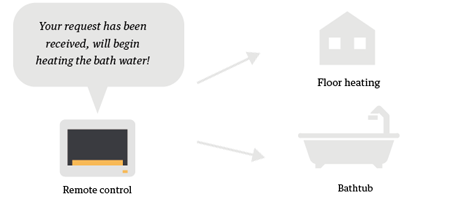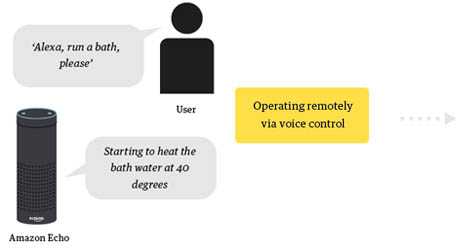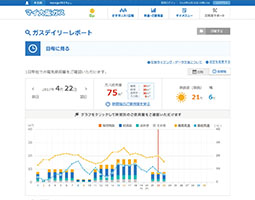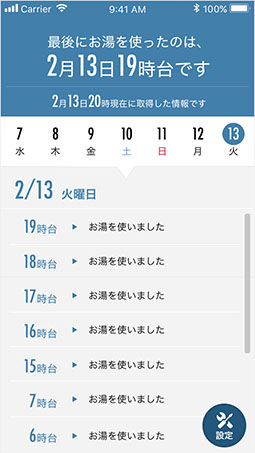Home > Highlighting JAPAN > Highlighting Japan June 2018 > Science & Technology
Highlighting JAPAN


Warming Baths and Floors By Voice Alone
Osaka Gas Co., Ltd. has begun offering new services to customers with IoT-supporting gas appliances, so they can heat bath water and floors remotely using smart speakers, and can even monitor usage at the homes of family members living apart.
IN April 2016, Osaka Gas Co., Ltd. began marketing “ENE-FARM” residential fuel cell systems with Wi-Fi remote control functionality [see here]. By connecting ENE-FARM through the cloud via Amazon Web Services, Osaka Gas was able to detect and report malfunctions and errors to users, arrange repairs of water heaters based on remote monitoring, and heat water in tubs and control floor heaters remotely via smartphone. Even better, users could also see their electricity usage rates and take advantage of energy conservation methods. In October 2017, Osaka Gas expanded ENE-FARM’s Internet of Things (IoT) services to more regular households by installing energy-saving latent heat recovery-type water heaters called “ECO-JOZU” in homes, rapidly extending these convenient and helpful services to a whole new group of users.
“Ninety-four percent of our remote water heater service clients feel a sense of security by using it,” says Taichi Inuzumi of the IoT Promotion Project at Osaka Gas. “While the hurdle is high to add new services such as sensor functions or devices, turning the kitchen remote on the water heater into an IoT terminal, it becomes part of everyone’s natural lifestyle and has successfully secured users.”
In April 2018, Osaka Gas began offering a smart new service for IoT users: gas appliances using smart speakers that can be controlled using voice commands. Users can now prepare hot water for the tub or turn the floor heating on and off by simply saying “heat the bathtub” or “turn on the floor heating” to an Amazon Echo unit.
There’s also a monitoring service for family members living apart that informs them of remote activity, such as “hot water was used in the washroom in the morning” or “bathtub was used last night.” This service offers a real sense of security and has garnered plenty of attention.
Aside from useful ways of using gas appliances, other services that bring in more customers include informing users how much pollen is in the air and providing helpful household tips. Another major draw is the daily gas reporting service that allows users to check on the company’s members-only site to see how much gas has been used for heating water, heating rooms, and other purposes.
Fears about outsiders accessing and remotely controlling such actions are naturally a concern, especially when handling and establishing security measures for the equipment. Satoshi Suzuki of the Smart Home Technology Development Team at Osaka Gas says all is well,
“The wireless LAN uses the Advanced Encryption Standard instead of Wired Equivalent Privacy encryption, and all connections to the server use TLS 1.2, the same encryption financial institutions use,” he explains. “We’ve even obtained a patent for the system where if the user does not directly control the remote in the kitchen, it will not automatically link to your smartphone.”
Osaka Gas plans to come up with more such innovative and highly valued services using technology such as Web API (Application Programming Interface), and to partner with various companies in these creations.
© 2009 Cabinet Office, Government of Japan








